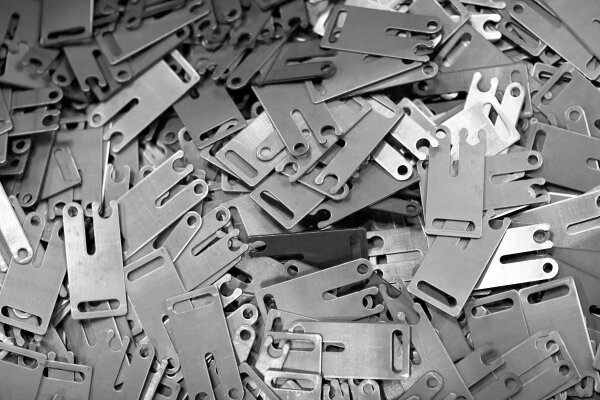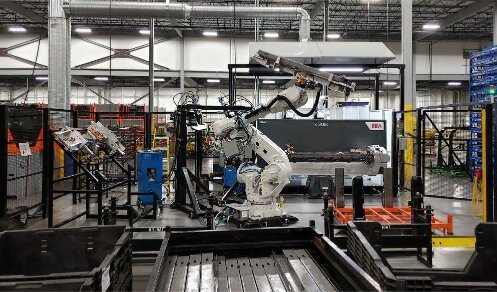Vous avez peut-être déjà entendu parler de production à faible volume, mais qu'est-ce que cela signifie vraiment ? Est-elle adaptée à votre entreprise ? Si vous cherchez des moyens rentables de développer ou de tester vos idées de produits, la production en petites quantités pourrait être la solution. Cette approche vous permet de produire de petites quantités tout en maintenant un niveau élevé de qualité, de flexibilité et d'efficacité.
La production de faibles volumes offre d'excellents avantages, en particulier pour les entreprises qui ont besoin de flexibilité, de rapidité et de faibles coûts initiaux. Elle convient parfaitement aux essais de prototypes, aux produits en édition limitée ou aux commandes à faible tirage.
Grâce à la fabrication en petites séries, les entreprises peuvent éviter les risques et les coûts de la production de masse tout en obtenant rapidement des produits de haute qualité.
Qu'est-ce que la production à faible volume ?
La production de faibles volumes désigne la fabrication d'un nombre limité d'unités, allant généralement de quelques dizaines à quelques milliers. Cette méthode permet aux entreprises de fabriquer des produits à plus petite échelle, mais avec la même qualité que la production de masse. Elle est souvent utilisée pour les prototypes, les tests de produits ou les articles à tirage limité. Les entreprises peuvent utiliser cette approche pour perfectionner leurs conceptions avant de s'engager dans la production de masse.
Dans l'industrie moderne, la fabrication en petites séries joue un rôle essentiel dans l'innovation et l'entrée sur le marché. Elle permet aux entreprises de tester leurs produits, de recueillir des commentaires et d'apporter rapidement des améliorations.
Quand la production de faibles volumes est-elle utilisée ?
La production en petites quantités est souvent choisie lorsqu'une entreprise doit produire de petites quantités d'un produit pour des raisons spécifiques. Voici quelques situations quotidiennes où la production en petites quantités est le meilleur choix.
Prototypage et essais de produits
Avant de s'engager dans une production à grande échelle, les entreprises utilisent la production en petites quantités pour créer des prototypes ou des échantillons initiaux. Cela leur permet de tester le produit dans des conditions réelles, de recueillir des commentaires et de procéder aux ajustements nécessaires.
Produits en édition limitée ou personnalisés
Certaines entreprises se spécialisent dans l'offre d'articles uniques, en édition limitée ou de produits personnalisés. La production à faible volume est idéale dans ce cas, car elle offre la souplesse nécessaire pour produire de petits lots adaptés aux besoins spécifiques des clients.
Tests de marché et lancement de nouveaux produits
Lorsqu'une entreprise souhaite pénétrer un nouveau marché ou tester un concept de produit, la fabrication en petites séries lui permet de produire suffisamment d'unités pour évaluer l'intérêt des clients sans prendre d'engagement important. C'est un moyen de tâter le terrain avant de passer à l'échelle supérieure.
Produits de niche ou spécialisés
La production de faibles volumes est idéale pour les industries où la demande de certains produits est limitée, comme l'électronique haut de gamme, les machines spécialisées ou les appareils médicaux. Ces produits peuvent nécessiter une personnalisation et le fait de les produire en faibles volumes permet de maintenir les coûts à un niveau raisonnable.
Réponse rapide aux changements du marché
Dans les secteurs où les tendances ou les technologies évoluent rapidement, la production de faibles volumes permet aux entreprises de s'adapter rapidement. Elles peuvent répondre aux variations de la demande ou aux nouvelles opportunités sans être liées à des calendriers de production à long terme.
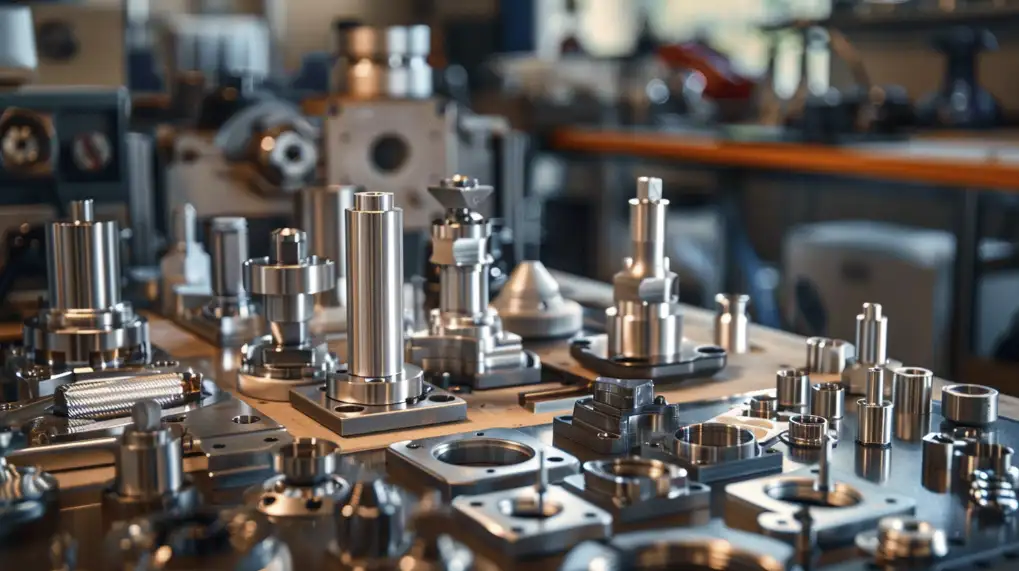
Avantages de la production de faibles volumes
La production de faibles volumes présente plusieurs avantages qui peuvent être utiles à de nombreuses entreprises. Voici comment elle peut améliorer votre processus de production.
Rapport coût-efficacité aux premiers stades de la production
L'un des principaux avantages de la production en petites séries est sa rentabilité dès les premières étapes. Elle permet aux entreprises d'éviter les coûts initiaux élevés de la production de masse.
Flexibilité dans la conception et les matériaux
La production de faibles volumes offre une plus grande flexibilité en termes de conception et de matériaux. Les fabricants peuvent facilement modifier la conception en fonction des réactions ou des essais, ce qui en fait un outil idéal pour le prototypage.
Délais d'exécution rapides pour les prototypes
Dans les secteurs en évolution rapide, la rapidité est cruciale. La fabrication en petites séries permet de raccourcir les délais d'exécution des prototypes. Les entreprises peuvent passer rapidement de la conception à la production et obtenir les réactions des clients ou des parties prenantes, ce qui réduit le temps nécessaire pour affiner et finaliser un produit.
Répondre aux demandes du marché avec rapidité et précision
La production de faibles volumes permet aux entreprises de répondre aux demandes du marché avec rapidité et précision. Qu'il s'agisse de lancer un nouveau produit ou de répondre aux demandes des clients, la production de petites quantités garantit que les produits sont disponibles au moment voulu.
Réduire les risques et les coûts dans le développement des produits
La production de faibles volumes réduit les risques et les coûts liés au développement de nouveaux produits. Commencer par de petites séries permet aux entreprises de tester le marché, d'évaluer les performances du produit et de recueillir les réactions des clients. Ces essais précoces permettent d'éviter les erreurs coûteuses ou la surproduction.
Techniques standard pour la production de faibles volumes
La production en petites séries fait appel à plusieurs techniques de fabrication, dont certaines aident les entreprises à créer rapidement et à moindre coût de petites quantités de produits de haute qualité. Voici quelques-unes des méthodes les plus courantes utilisées dans la production en petites séries.
Fabrication additive (impression 3D)
Fabrication additive( Impression 3D) est l'une des techniques les plus souples et les plus utilisées pour la production de faibles volumes. Cette méthode permet de construire des produits couche par couche à partir de dessins numériques. Elle permet d'obtenir des formes complexes et de les personnaliser sans avoir recours à des moules ou à des outils spéciaux.
L'impression 3D est idéale pour les prototypes, les petites séries de produits personnalisés et les articles détaillés. Elle est rentable pour la fabrication, car la configuration est minimale et les délais de production rapides.

Usinage CNC
Usinage CNC est une technique précise utilisée pour créer des pièces en enlevant de la matière d'une pièce. Elle est très précise et peut être utilisée avec des métaux, des plastiques et d'autres matériaux.
L'usinage CNC est souvent utilisé dans la fabrication de faibles volumes pour réaliser des prototypes ou des composants uniques pour des industries telles que l'automobile, l'aérospatiale et les appareils médicaux. Il offre une précision et une qualité de surface excellentes, ce qui le rend idéal pour la production de petites séries de haute qualité.
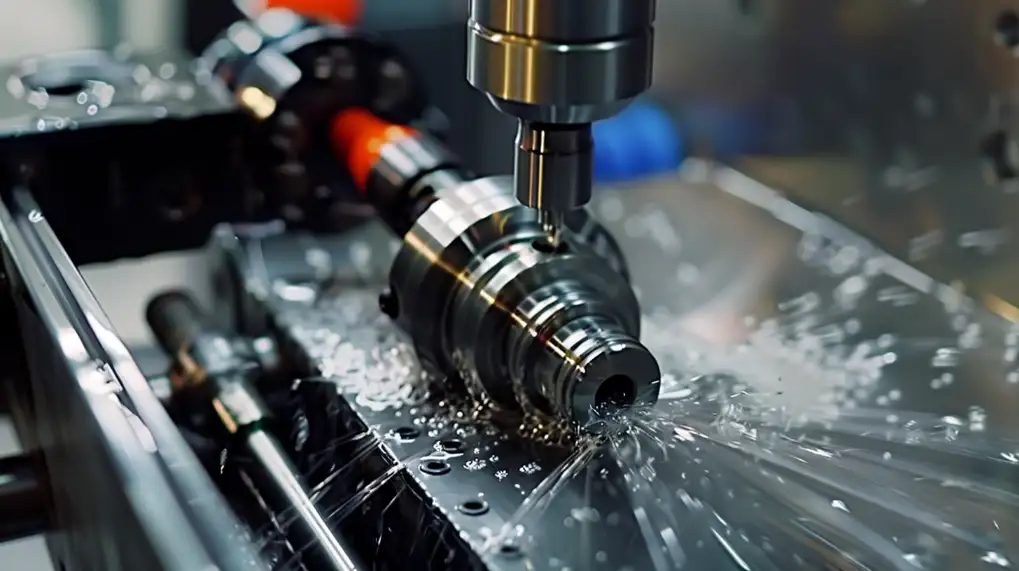
Fabrication de tôles
Fabrication de tôles est une méthode polyvalente utilisée dans la production de faibles volumes pour créer des produits à partir de feuilles de métal. Elle comprend des procédés tels que Coupe, flexion, perforation, et soudage pour façonner les pièces.
Cette technique est couramment utilisée pour fabriquer des produits tels que des boîtiers, des châssis et des composants sur mesure. La fabrication de tôles offre une grande souplesse dans la conception et le choix des matériaux, ce qui la rend populaire dans des secteurs tels que l'électronique, l'automobile et la construction.
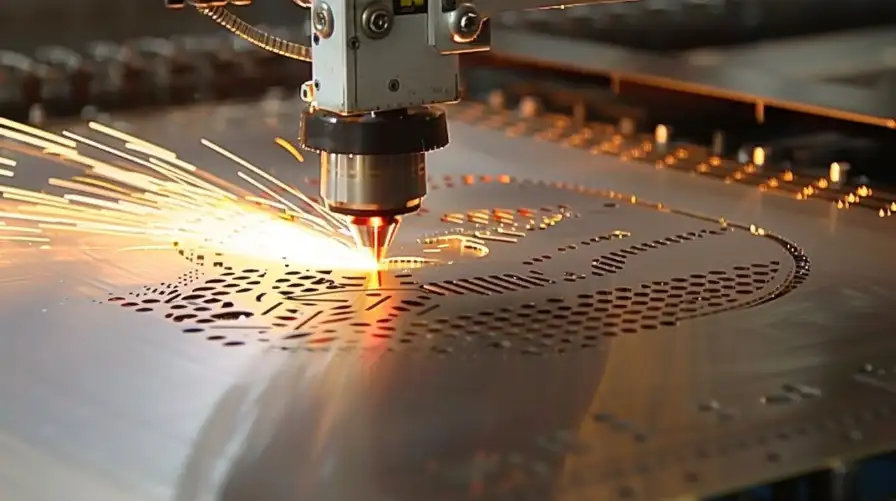
Moulage par injection
Moulage par injection est une méthode de production de pièces en plastique en faibles volumes. Elle consiste à injecter de la matière en fusion dans un moule pour obtenir la forme souhaitée.
Le principal avantage de cette technique est sa capacité à créer des pièces cohérentes et de haute qualité avec des dessins détaillés. Bien que les moules puissent être coûteux, ils restent rentables pour les volumes moyens à faibles.
Coulée sous vide
Coulée sous vide est une technique utilisée pour produire des pièces en plastique et en caoutchouc à partir de moules en silicone. Elle consiste à verser des matériaux liquides dans une chambre à vide afin d'éliminer les bulles d'air et de garantir des pièces détaillées et de haute qualité.
Cette méthode est parfaite pour la fabrication de petits lots, en particulier lorsqu'une conception doit être testée ou affinée avant la production de masse. Elle est utile pour le prototypage rapide, la fabrication de faibles volumes et la création de pièces complexes avec des tolérances serrées.
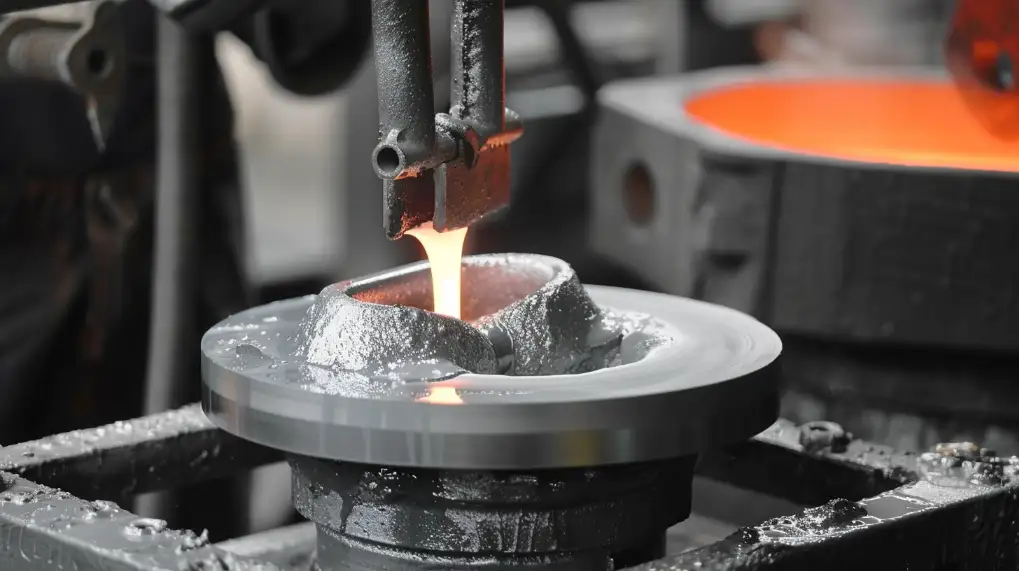
Meilleures pratiques pour une fabrication à faible volume réussie
La production de faibles volumes nécessite une planification réfléchie. Suivez ces pratiques clés pour garantir la qualité, l'efficacité et la rentabilité.
Communication efficace avec les équipes de conception et de fabrication
Une communication claire permet d'éviter des erreurs coûteuses. Partagez les fichiers CAO détaillés et les spécifications dès le départ. Discutez dès le départ des limites de la méthode de production que vous avez choisie. Des contrôles réguliers permettent de maintenir les projets sur la bonne voie.
Planifier la flexibilité et l'évolutivité
Choisir des méthodes de fabrication qui permettent des ajustements faciles. Concevoir les pièces en tenant compte de l'évolutivité future. Utilisez des conceptions modulaires dans la mesure du possible. Cela facilite la transition vers des volumes plus importants si nécessaire.
Procédures de contrôle de la qualité et d'essai
Mettre en œuvre des contrôles de qualité stricts à plusieurs étapes. Tester des échantillons de la première série de production. Documenter toutes les mesures et tolérances. Une qualité constante est tout aussi importante pour les petits lots.
Gestion des délais d'exécution et des calendriers de production
Un faible volume n'est pas toujours synonyme de rapidité. Tenez compte des temps de préparation et de l'approvisionnement en matériaux. Prévoyez une période tampon pour les retards imprévus. Établissez des priorités pour les éléments du chemin critique afin que les projets avancent.
Collaborer avec les bons partenaires de fabrication
Recherchez des fournisseurs ayant une expérience avérée en matière de faibles volumes. Vérifiez leurs capacités en matière d'équipement et leurs certifications de qualité. Les bons partenaires offriront un retour d'information sur la conception et suggéreront des solutions permettant de réduire les coûts.
Production à faible volume et production à haut volume : Une comparaison
Comprendre ces approches vous aidera à choisir celle qui convient le mieux à votre projet. Examinons les principales différences.
Différences dans les techniques de fabrication
Les faibles volumes privilégient les méthodes flexibles telles que l'usinage CNC et l'impression 3D, qui nécessitent un minimum d'installation. Les gros volumes utilisent des outils dédiés, comme les moules d'injection en acier, qui coûtent plus cher au départ mais produisent des pièces plus rapidement.
Analyse des coûts et marges bénéficiaires
Un faible volume entraîne des coûts unitaires plus élevés, mais un investissement initial plus faible. Le volume élevé fait baisser les coûts grâce aux économies d'échelle. Les marges bénéficiaires s'améliorent avec le volume, mais il faut des commandes plus importantes pour atteindre le seuil de rentabilité.
Considérations relatives au délai de mise sur le marché
Les petites séries permettent de commercialiser les produits plus rapidement, souvent en quelques semaines au lieu de quelques mois. Les gros volumes nécessitent des délais plus longs pour l'outillage et la mise en place. Il est plus facile d'obtenir un retour d'information rapide du marché avec les faibles volumes.
Évolutivité et croissance future
Un faible volume permet une mise à l'échelle progressive en fonction de l'augmentation de la demande. Un volume élevé nécessite des prévisions de vente fiables. Le passage d'une méthode à l'autre doit être planifié - certaines méthodes s'adaptent mieux que d'autres.
Comment déterminer si la fabrication en petites quantités convient à votre projet ?
Choisir la bonne approche de production permet d'économiser du temps et de l'argent. Voici comment déterminer si le faible volume correspond à vos besoins.
Évaluer la complexité des produits et la demande
Les produits simples dont la demande est prévisible passent souvent directement à la production de masse. Les produits complexes ou non éprouvés bénéficient d'abord d'un faible volume. Posez la question :
- Mon projet est-il finalisé ou en cours d'élaboration ?
- Les besoins du marché sont-ils clairement compris ?
- Les clients paieront-ils pour cette version ?
Évaluation des tests de prototypes et des itérations
Les faibles volumes se distinguent lorsque vous avez besoin d'essais en conditions réelles. Envisagez-la lorsque :
- Les essais sur le terrain révèlent des améliorations nécessaires
- De multiples itérations de conception sont probables
- Différentes options de matériaux doivent être évaluées
- Il est moins coûteux de corriger les problèmes dans les petits lots que de rappeler des articles produits en masse.
Analyse coûts-avantages pour les petites séries
Comparez ces facteurs :
- Coûts d'outillage par rapport au prix unitaire
- Frais de stockage des invendus
- Coût de l'opportunité perdue en cas de modification de la conception
- Valeur de l'étude de marché
Le faible volume l'emporte généralement dans les cas suivants
- Les ventes totales prévues sont inférieures à 10 000 unités
- Des modifications de la conception sont probables
- Le risque de marché est incertain
- Les flux de trésorerie sont limités
L'approche la plus innovante combine souvent les deux - utiliser un faible volume pour valider, puis augmenter.
Conclusion
La production de faibles volumes est une solution flexible et rentable pour les entreprises qui souhaitent créer de petites quantités de produits de haute qualité. Elle est particulièrement utile pour les prototypes, les essais de produits et les marchés de niche. En permettant des ajustements rapides, elle accélère la mise sur le marché et réduit les risques et les coûts.
Prêt à découvrir comment la production en petites quantités peut vous aider à donner vie à vos idées ? Contactez-nous dès aujourd'hui pour obtenir un devis personnalisé et voir comment nous pouvons vous aider dans votre prochain projet !
Hey, je suis Kevin Lee

Au cours des dix dernières années, j'ai été immergé dans diverses formes de fabrication de tôles, partageant ici des idées intéressantes tirées de mes expériences dans divers ateliers.
Prendre contact

Kevin Lee
J'ai plus de dix ans d'expérience professionnelle dans la fabrication de tôles, avec une spécialisation dans la découpe au laser, le pliage, le soudage et les techniques de traitement de surface. En tant que directeur technique chez Shengen, je m'engage à résoudre des problèmes de fabrication complexes et à favoriser l'innovation et la qualité dans chaque projet.

